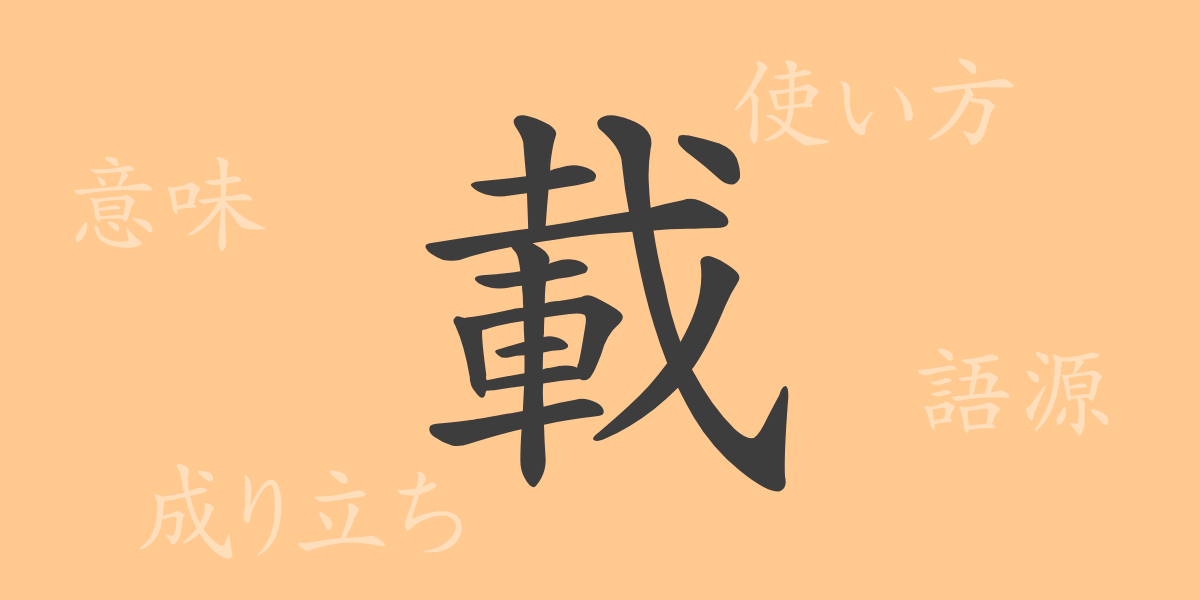The beauty of the Japanese language is reflected in its delicate characters. Each kanji has a history and a unique story. This time, we focus on the commonly used kanji “載” (sai), often seen in daily life, and explore its charm. We will delve into the origins, meanings, usages, readings, stroke count, and radical of the kanji “載” (sai). Additionally, through idioms and proverbs that include this kanji, we will embark on a journey to appreciate the depth of the Japanese language.
Etymology of 載 (sai)
The kanji “載” (sai) consists of the radical for “car” (車, kuruma) and the component “戈” (hoko, meaning weapon). In ancient China, transportation was primarily done by carriages, and “載” (sai) developed from the concept of loading objects or people onto a vehicle. It also came to be used for recording dates and times. Thus, “載” (sai) encompasses the basic concepts of carrying and recording.
Meanings and Usages of 載 (sai)
The kanji “載” (sai) means “to load,” “to carry,” and “to record.” Specifically, it is used for placing objects on something or for documenting information or text in writings or records. It can also be used to denote the passage of time or the fulfillment of an event.
Reading, Stroke Count, and Radical of 載 (sai)
Here are the basic details of the kanji “載” (sai):
- Reading: In the on’yomi reading, it is “サイ” (sai), and in the kun’yomi reading, it is “の.せる” (no.seru) and “の.る” (no.ru).
- Stroke count: “載” (sai) consists of 13 strokes.
- Radical: The radical is 車部 (kuruma, meaning car), which is used to classify related kanji.
Idioms, Phrases, and Proverbs Using 載 (sai) and Their Meanings
Here are some idioms, phrases, and proverbs that include “載” (sai):
- 記載 (きさい, kisai): To write down or record information in texts or tables.
- 載冠 (さいかん, saikan): A ceremony marking adulthood, symbolized by placing a crown on the head, meaning to come of age.
- 一載 (いっさい, issai): Meaning one year, denoting the passage of time.
- 載金 (さいきん, saikin): Refers to financial burdens, especially public burdens like taxes.
- 天下に載る (てんかにのる, tenka ni noru): An idiom meaning to become widely known in the world.
Conclusion on 載 (sai)
The kanji “載” (sai) illustrates the richness of Japanese expression through its wide range of uses. From actions like loading and recording to words indicating the passage of time, it is used in various contexts. The use of a single kanji in multiple scenarios highlights the depth of kanji culture. Through this exploration, we hope you can view “載” (sai) with a new perspective in your daily encounters.

























